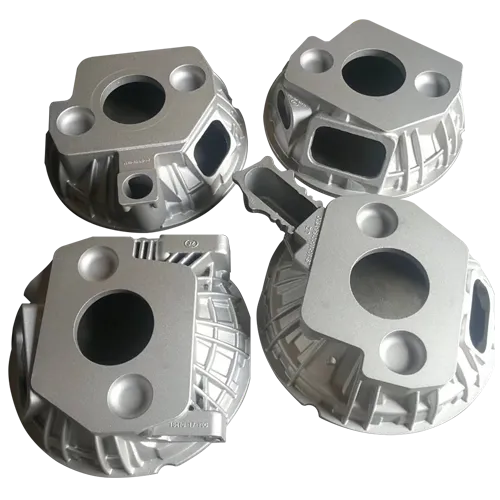Mobile:+86-311-808-126-83
Email:info@ydcastings.com
how to cast aluminum in sand
How to Cast Aluminum in Sand
Aluminum sand casting is a widely used method to create metal parts and components due to its adaptability, cost-effectiveness, and the ability to produce intricate shapes. This process involves pouring molten aluminum into a mold made of sand and creating castings that can be used in various applications, ranging from automotive parts to industrial machinery. In this article, we’ll explore the steps involved in casting aluminum in sand, the materials required, and some best practices to ensure a successful casting process.
Materials Needed
Before beginning the sand casting process, gather the following materials 1. Sand Fine and clean silica sand is preferred due to its ability to withstand high temperatures. 2. Mold Box A stable frame where the sand mold will be formed. 3. Pattern A model of the part you wish to create, typically made from metal or durable plastic, which will help form the cavity in the sand. 4. Molten Aluminum Aluminum that has been heated to its melting point (approximately 660°C or 1220°F). 5. Flask A container that holds the sand mold. 6. Release Agent A substance to allow easy removal of the pattern from the mold without damaging the sand.
Step-by-Step Process
1. Design the Pattern The first step in sand casting is designing a pattern that replicates the desired part. The pattern is usually slightly larger than the final product to allow for shrinkage as the aluminum cools.
2. Prepare the Mold - Fill the mold box with sand, packing it tightly around the pattern to create the shape of the part. This step is vital to ensure the mold holds its shape during the casting. - Once the sand is packed around the pattern, carefully remove the pattern to create a cavity in the sand. Ensure to create sufficient vents for the gas that will escape during pouring.
3. Mold Coating Apply a release agent to the mold cavity to help facilitate easy removal of the final cast part.
how to cast aluminum in sand

4. Melt the Aluminum In a furnace, heat aluminum until it melts completely. It’s crucial to monitor the temperature carefully to prevent contamination and ensure a clean pour.
5. Pouring the Aluminum - Once the aluminum is molten and at the correct temperature, carefully pour it into the mold cavity. Pouring should be done steadily to avoid bubbles, which can weaken the final casting. - Ensure that the entire cavity is filled and that the metal flows smoothly without interruption.
6. Cooling Allow the molten aluminum to cool and solidify in the mold. This may take several minutes, depending on the size and thickness of the casting.
7. Demolding Once cooled, carefully remove the sand mold to retrieve the cast aluminum part. If the mold was well-prepared, it should come apart easily.
8. Finishing Touches After demolding, excess sand can be brushed off, and any necessary finishing touches, such as trimming or machining, can be performed to achieve the desired specifications.
Best Practices
- Temperature Control Always keep a close eye on the melting temperature of aluminum to ensure it is poured smoothly into the mold. - Mold Quality Invest time in achieving a good mold to ensure the best casting quality. The finer the sand and the more precisely packed the mold, the better the final product. - Safety First Aluminum casting involves high temperatures, so proper safety gear, including gloves and eye protection, is essential.
In conclusion, sand casting aluminum is a practical and efficient method for producing metal parts. By following the outlined steps and adhering to best practices, anyone can achieve high-quality castings suitable for a variety of applications. With its versatility and relatively low startup costs, sand casting remains an excellent choice for both hobbyists and professionals in metalworking.
-
Why Should You Invest in Superior Pump Castings for Your Equipment?NewsJun.09,2025
-
Unlock Performance Potential with Stainless Impellers and Aluminum End CapsNewsJun.09,2025
-
Revolutionize Your Machinery with Superior Cast Iron and Aluminum ComponentsNewsJun.09,2025
-
Revolutionize Fluid Dynamics with Premium Pump ComponentsNewsJun.09,2025
-
Optimizing Industrial Systems with Essential Valve ComponentsNewsJun.09,2025
-
Elevate Grid Efficiency with High-Precision Power CastingsNewsJun.09,2025











